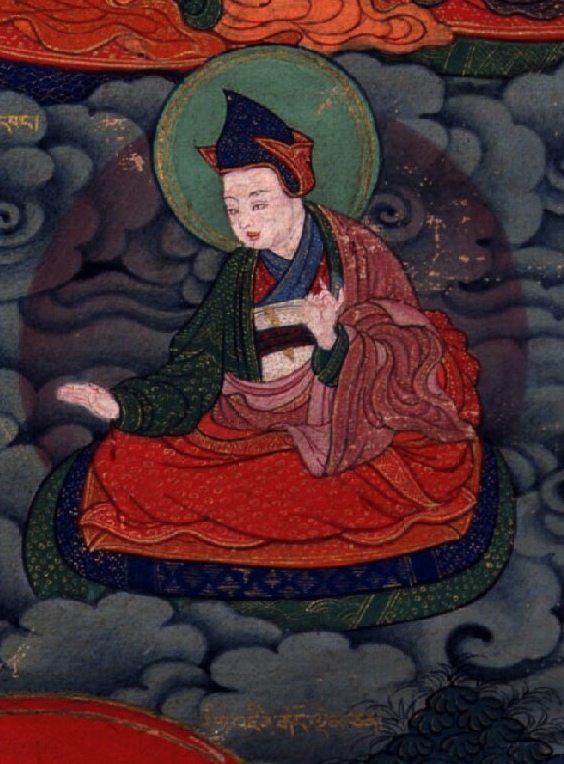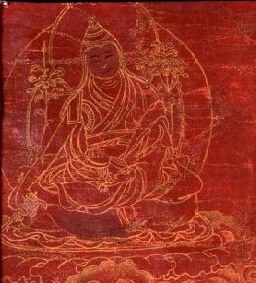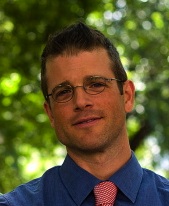Biography and autobiography in Tibet are important sources for both education and inspiration. Tibetans have kept such meticulous records of their teachers that thousands of names are known and discussed in a wide range of biographical material. All these names, all these lives—it can be a little overwhelming. The authors involved in the Treasury of Lives are currently mining the primary sources to provide English-language biographies of every known religious teacher from Tibet and the Himalaya, all of which are organized for easy searching and browsing. Every Tuesday on the Tricycle blog, we will highlight and reflect on important, interesting, eccentric, surprising and beautiful stories found within this rich literary tradition.
Part 1: Padmasambhava
Part 2: Dampa Deshek
Part 3: Nyangrel
Nyingma Founders, Part 4: The Jangter Tradition
The Jangter, or Northern Treasures, counts as one of the earliest Buddhist treasure traditions. It seems to have been given the name of Northern Treasure in order to differentiate it from the revelations of Nyangrel Nyima Ozer (1136–1204) and Guru Chowang (1212–1270), who were active in southern Tibet. Although it ultimately came to be based at Dorje Drak Monastery, the tradition began several hundred years before the institution was established with a man recognizable for the feathery protuberances sticking from his head: Rigdzin Godemchen.
 Rigdzin Godemchen Ngodrub Gyeltsen was born in Lato, Tibet in 1337. His father was a tantrika who specialized in an early tradition of Vajrakila, which he passed to his son. According to legend, at around the age of 11 three feathery growths appeared on the top of his head. By the time he was 23 there were five. Because these growths looked like the feathers of a vulture, he became famous as Godkyi Demtruchen, “the one with vulture’s feathers,” which can be shortened to Godemchen.
Rigdzin Godemchen Ngodrub Gyeltsen was born in Lato, Tibet in 1337. His father was a tantrika who specialized in an early tradition of Vajrakila, which he passed to his son. According to legend, at around the age of 11 three feathery growths appeared on the top of his head. By the time he was 23 there were five. Because these growths looked like the feathers of a vulture, he became famous as Godkyi Demtruchen, “the one with vulture’s feathers,” which can be shortened to Godemchen.
In his late 20s Godemchen came into possession of a prophecy of a treasure that had been revealed by a lama named Maglam Zangpo Drakpa. In 1366 Godemchen was able to parlay that prophetic narrative into an extensive revelation of his own on the slope of Mount Trazang, near his homeland. Over the course of several months he extracted the texts of what came to be known as the Jangter, a set of tantric ritual manuals with a particular focus on Vajrakila. Godemchen went on to open several “hidden valleys” in the Sikkim region, and, later in life, established Se Trazang Monastery, which became the seat of his son and heir to his lineage, Namgyel Gonpo.
 While Namgyel Gonpo continued to promote the Jangter, the tradition was greatly expanded by a man named Lekden Dorje (1452–1565) and his younger brother, Ngari Panchen Pema Wanggyel (1487–1542). The two brothers, who traveled around Tibet as itinerant tantric yogis, established a community of practitioners near Samye called Evam Chokgar. They later went down into Nepal, where, at the Yanglesho Cave outside of Kathmandu, they met Shakya Zangpo, posthumously recognized as the First Yolmo Tulku. Shakya Zangpo had been a close disciple of Godemchen, and he gave them the complete transmission of the Jangter. Shakya Zangpo also identified Lekden Dorje as Godemchen’s reincarnation, ensuring that the young man would become the major promoter of the still young tradition. Lekden Dorje continued to wander central Tibet, visiting monasteries, hermitages, and caves where he sat lengthy retreats and taught his disciples. He also continued to expand his predecessor’s treasure revelations with discoveries of his own.
While Namgyel Gonpo continued to promote the Jangter, the tradition was greatly expanded by a man named Lekden Dorje (1452–1565) and his younger brother, Ngari Panchen Pema Wanggyel (1487–1542). The two brothers, who traveled around Tibet as itinerant tantric yogis, established a community of practitioners near Samye called Evam Chokgar. They later went down into Nepal, where, at the Yanglesho Cave outside of Kathmandu, they met Shakya Zangpo, posthumously recognized as the First Yolmo Tulku. Shakya Zangpo had been a close disciple of Godemchen, and he gave them the complete transmission of the Jangter. Shakya Zangpo also identified Lekden Dorje as Godemchen’s reincarnation, ensuring that the young man would become the major promoter of the still young tradition. Lekden Dorje continued to wander central Tibet, visiting monasteries, hermitages, and caves where he sat lengthy retreats and taught his disciples. He also continued to expand his predecessor’s treasure revelations with discoveries of his own.
After his brother passed away he identified his reincarnation in the person of Jangdak Tashi Tobgyel (1550–1603). When he himself was close to death, Tashi Tobgyel wept and begged him to lengthen his life. Lekden Dorje replied that as Tashi Tobgyel loved him so much, he would take rebirth as his son. Sure enough, 15 years later Tashi Tobgyel had a son, whom he named Ngakgi Wangpo (1580–1639), and whom he identified as the reincarnation of his teacher.
Ngakgi Wangpo was thus the reincarnation of his father’s previous incarnation’s brother, a fact that bears witness to the frequent interweaving of familial and incarnation lineages. Tashi Tobgyel transmitted the complete Jangter teachings to Ngakgi Wangpo, bringing in other lineage holders to make up for whatever transmissions he did not possess. Although he was able to spend some years practicing in caves in southern Tibet, political strife in central Tibet in the early 17th century forced Ngakgi Wangpo and his father to move east, where he is said to have engaged in black magic against his enemies. He developed quite a reputation as a ritual specialist as well as a teacher; among his students was the Fifth Dalai Lama, Ngawang Lobzang Gyatso (1617–1682). The Fifth Dalai Lama compiled his official biography, and the Jangter tradition would go on to play an important role in the newly formed government in Lhasa.
Some time between 1610 and 1632, Ngakgi Wangpo moved the Evam Chokgar community, establishing it on the north bank of the Tsangpo River below a rocky promontory that had the appearance of a vajra. For this reason, the new monastery took the name of Dorje Drak, meaning “vajra cliff.” Under his subsequent incarnation, the Fourth Dorje Drak Rigdzin, Pema Trinle (1641–1717), the monastery rose to prominence as a major center of Nyingma activity, the main seat of the Jangter tradition. Ngakgi Wangpo took the title of Dorje Drak Rigdzin, which was then posthumously applied to Godemchen and Lekden Dorje, who became the First and Second Dorje Drak Rigdzin, respectively. The monastery was destroyed during the anti-Nyingma rampages of the Dzungar Mongols in the early 18th century and again in the 1960s, but has since been rebuilt. Born in 1936, the Eighth Dorje Drak Rigdzin, Namdrol Gyatso, currently lives in Lhasa.
 Alexander Gardner has a PhD from the University of Michigan in Buddhist Studies and serves as the Associate Director of the Rubin Foundation.
Alexander Gardner has a PhD from the University of Michigan in Buddhist Studies and serves as the Associate Director of the Rubin Foundation.